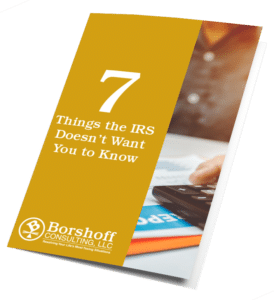There are many ways you can save money come tax season. You can take many different tax deductions and/or tax credits that may help you reduce the amount of taxes you owe to the IRS.
The government understands the cost of education is high; that’s why it offers many student tax breaks related to the cost of furthering your learning.
The most notable tax breaks include the tuition and fees deduction, the student loan interest deduction, the American opportunity tax credit, and the lifetime learning tax credit.
This article will examine the details of each of these tax breaks, including education tax savings plans that you can take advantage of.
What are the Education Tax Deductions?
The Tuition and Fees Deduction
What is it?
The tuition and fees deduction gives you the opportunity to subtract the cost of college tuition and other qualified education-related expenses from your taxable income. This can help reduce your tax liability and save money on certain education-related expenses.
This tax deduction has been on and off again due to the Tax Cuts and Jobs Act (TCJA) of 2017. However, the tuition and fees deduction was restored by the Further Consolidated Appropriations Act of 2020 and will continue through December 31, 2020.
Who can claim the tax deduction?
In general, to claim the tuition and fees tax, you must:
- You pay qualified education-related expenses for higher education.
- You pay education-related expenses for an eligible student.
- The eligible student is you, your spouse, or your dependent whom you claim on your annual tax return.
- You are not filing a married filing a separate tax return (MFS).
- You are not claimed as a dependent on another taxpayer’s annual tax return.
- Your modified adjusted gross income (MAGI) is $80,000 or less ($160,000 if filing a joint married tax return).
Check out IRS Publication 519 for more information on the specific qualification requirements relating to being a nonresident alien student for this tax deduction.
How does it work?
You can deduct up to $4,000 for qualified education-related expenses you incurred during the tax year. $4,000 is the maximum deduction for the tax years 2019 and 2020.
The eligible education-related expenses include tuition, fees, supplies, books, and other required education-related expenses. These expenses cannot be related to transportation or be living-related costs. For example, expenses for room and board do not qualify for this deduction. An example of the fees that you can include is the fees required for enrollment.
Education-related expenses for courses related to games, spots, or hobbies are not deductible, even if they are required by the school. Also, courses that are not required to achieve your degree are not considered to be eligible.
What else do I need to know?
The tuition and fees tax deduction is limited by your income ranges as related to your modified adjusted gross income (MAGI). The 2020 thresholds provide for a $4,000 maximum deduction for income levels up to $65,000 (single) and $130,000 (married filing joint tax returns).
The threshold allows for a $2,000 maximum deduction for income levels over $65,000 up to $80,000 (single) and $130,000 up to $160,000 (married filing joint tax returns). Income levels above $80,000 (single) and income levels above $160,000 (married filing joint tax returns) are not permitted to take this tax deduction.
You cannot claim this deduction and an education tax credit in the same year for the same eligible student on the same tax return. Speak to a qualified tax accountant or calculate your taxes with each of the tax benefits so that you can see which tax benefit will give you the best tax benefit.
You will likely be better off saving money with a tax credit, especially if you can claim the American Opportunity Tax Credit (AOTC). However, if you do not qualify for the AOTC or the Lifetime Learning Tax Credit (LLC), you can greatly benefit from taking this tax deduction.
The Student Loan Interest Deduction
What is it?
The student loan interest deduction lets taxpayers who have student loans deduct all or part of the interest paid on their federal and private student loans. According to the IRS, “student loan interest” is considered to be the interest you have paid during the year on a qualified student loan. This includes both required and voluntarily pre-paid interest payments.
If you are an eligible student, you can claim this deduction as an adjustment to your adjusted gross income, so you don’t have to itemize your deductions to take this tax benefit.
The eligible student for this deduction enjoys this tax advantage because you can claim this deduction even if you use the standard deduction.
Who can claim the tax deduction?
All of the following must be true for you to take this deduction:
- You were obligated to pay interest on a qualified student loan.
- Your filing status is not married filing separate tax returns (MFS).
- Your modified adjusted gross income (MAGI) is less than a specified amount set for the tax year.
- You or your spouse (if married filing a joint tax return) cannot be claimed as a dependent on another taxpayer’s tax return.
- The qualified student loan is one you took solely to pay qualified higher-education expenses that were (1) for you, your spouse, or your dependent (2) for education during an academic period for an eligible student and (3) was paid or incurred within a reasonable period of time before or after you took out the student loan.
For more information on these restrictions, see IRS Publication 970: Tax Benefits for Education.
How does it work?
The student loan interest deduction lets you deduct the lesser of $2,500 or the amount of interest you actually paid during the year. This deduction is worth up to $4,000 off your taxable income.
The student loan proceeds must have been entirely dedicated to qualified education-related expenses, such as room and board, tuition, books, supplies, equipment, fees, and transportation. One important note is these allowances are not the same for the other tax benefits, so read the description under each one for the right information.
You will receive Form 1098-E: Student Loan Interest Deduction from your school, which you can use to complete your tax return. It will tell you how much you paid in student loan interest during the tax year. If you don’t receive one by January 31, call your school and ask for the amount you paid in interest on your student loan.
To complete your tax return, just enter the number from Schedule 1 onto IRS Form 1040.
(Add the student loan interest on Schedule 1 in the place where it says, “Student Loan Interest Deduction.”)
What else do I need to know?
Provided you paid $600 or more in interest on a qualified student loan during the year, you will receive Form 1098-E, Student Loan Interest Statement, from the school that you paid the student loan interest for.
See the instructions for IRS Form 1040, 1040-SR, 1040-NR, or 1040-NR-EZ to determine if your education-related expenses qualify for this deduction.
For more information on this tax break, check out the Interactive Tax Assistant, Can I Claim a Deduction for Student Loan Interest?
Also, IRS Topic 456: Student Loan Interest Deduction can provide you with more specific information on this topic.
What are the Education Tax Credits?
The American Opportunity Tax Credit
What is it?
The American Opportunity Tax Credit (AOTC) allows taxpayers who are students or their parents the chance to reduce the cost of going to college. The IRS explains that the AOTC is a partially refundable tax credit for qualified educational expenses paid by or for an eligible student.
It was created to help pay for the costs that American taxpayers have incurred for higher education. It works for a maximum of four years of college.
Who can claim the tax credit?
The American Opportunity Tax Credit (AOTC) can be claimed by students or parents of students who are pursuing a degree or other qualified education program, enrolled at least half time for at least one academic period beginning in the tax year.
To claim the credit, the student cannot have finished the four years of higher education at the beginning of the tax year, not have claimed the AOTC or the Hope credit for more than four tax years, and not have a felony drug conviction at the end of the tax year.
Taxpayers, who claim as a dependent, any student in college, can use this credit. However, only one taxpayer per student can use the credit. So, if you are claimed as a dependent on your parents’ tax return, and they take the tax credit, you cannot also take the tax credit.
How does it work?
A student could lower his or her tax bill by up to $2,500 if that much was paid by him or her for educational expenses in the previous year.
This credit allows you the opportunity to claim all of the first $2,000 that was spent on qualified college expenses, such as books, supplies, school fees, and tuition. It does not cover living expenses like room and board or transportation costs. Plus, you are able to take 25% of the next $2,000, for a total of $2,500.
So, if during the tax year 2019, you owe $3,500 in taxes and get the full tax credit of $2,500, you will only have to pay $1,000 ($3,500 less credit of $2,500) to the IRS.
According to the IRS, to claim this tax credit, the taxpayer is required to have Form 1098-T, Tuition Statement, from an eligible educational institution – domestic or foreign. As a student, you should receive this form from your school by January 31. This statement will help you figure your credit amount.
Complete IRS Form 8863: Education Credits to claim this tax credit and attach the completed form to your tax return.
What else do I need to know?
In order to claim the full amount of the credit, your modified adjusted gross income (MAGI) must be $80,000 or less ($160,000 or less for those filing joint tax returns).
To claim a reduced amount of the credit, your modified adjusted gross income (MAGI) must be less than $90,000 and more than $80,000 (Between $160,000 and $180,000 for married filing jointly).
You cannot claim the credit if your modified adjusted gross income (MAGI) is over $90,000 ($180,000 for married filing jointly).
The tax credit is refundable. You may be able to receive 40% of the credit’s value (up to $1,000) even if you had no income last year and/or owe no tax. In other words, if you qualify for this refund, you could increase the amount you receive up to $1,000.
In most cases, this tax credit is the best education tax break for students or their parents.
Summary of the American Opportunity Tax Credit
Business Insider explains it well. By using the American Opportunity Tax Credit, as a student, you are eligible to claim up to a total of $2,500 for the first 4 years of postsecondary education for tuition, fees, books, equipment, and supplies.
The Lifetime Learning Credit
What is it?
The Lifetime Learning Credit (LLC) also helps with the cost of education. LLC is a tax credit for qualified tuition and education-related expenses paid for eligible students who are enrolled at an eligible educational institution. The qualified education-related expenses eligible for this tax credit do not include transportation costs or living expenses.
This tax credit can help pay for undergraduate, graduate, and professional degree courses. This includes courses taken to gain or improve upon job-related skills. Unlike the American Opportunity tax credit, there’s no limit on the number of years you can claim the LLC.
Who can claim it?
To be eligible for the Lifetime Learning Credit, the student must be enrolled in or currently taking courses at an eligible educational institution, taking higher education courses in order to get a degree or other recognized education-related credential or to gain/improve upon job-related skills, and be enrolled for at least one academic period beginning in the applicable tax year.
How does it work?
The Lifetime Learning tax credit is worth 20% of the first $10,000 of qualified education expenses or a maximum of $2,000 per annual tax return.
Like the AOTC, to claim this tax credit, the taxpayer is required to have Form 1098-T, Tuition Statement, from an eligible educational institution, domestic or foreign. Students should receive this form from their school by January 31. Use this statement to figure out the amount of Lifetime Learning tax credit.
Use IRS Form 8863: Education Credits to claim this tax credit; attach the completed form to your annual tax return.
What else do I need to know?
In order to claim the full amount of the credit, your modified adjusted gross income (MAGI) must be $58,000 or less ($116,000 or less for those filing joint tax returns). For the tax year 2020, the MAGI has been increased to $59,000 or less ($118,000 or less for those filing joint tax returns).
Unlike the American opportunity tax credit, the LLC is not refundable. You can use the credit against any tax you owe, but you will not receive any of the credit back as a tax refund.
Summary of the Lifetime Learning Tax Credit
Business Insider explains that the Lifetime Learning Tax Credit allows students who are taking undergraduate, graduate, or professional degree programs who have an AGI below $59,000 (single taxpayers) or $118,000 (married taxpayers), for the tax year 2020, to claim up to $2,000 with this tax credit for education-related expenses on a per tax return basis.
Can You Claim an Education Tax Credit?
To claim an education tax credit, you must meet the specific requirements spelled out by the Internal Revenue Service (IRS). There are income requirements, and college students can only claim one tax credit per tax year. However, if you are married, filing a joint tax return, you may be able to claim both credits.
Business Insider explains this well. You cannot claim both the Lifetime Learning Tax Credit and the American Opportunity Tax Credit for the same taxpayer in the same year. However, you can claim both on a single tax return where two students qualify individually.
Compare the American Opportunity tax credit and the Lifetime Learning tax credit on the IRS’s website to see which one will work best for you this year.
What are the Education Tax College Savings Plans?
Qualified Tuition Programs (529 Plans)
What is a 529 plan?
A 529 plan offers tax and financial aid benefits. You can use it to save for tuition. There are two main types of 529 plans: prepaid tuition plans and college savings plans.
Today, almost every state has at least one 529 plan available. Plus, some private colleges and universities have them. The IRS offers special tax benefits for the 529 plans.
The prepaid tuition plans allow you the chance to prepay the costs of public college education in your state. You may be able to convert these plans for the use of education in private or out-of-state colleges. More than 250 private colleges participate in the private college 529 plan.
The college savings plans work like Roth IRA plans by investing your contributions after tax in mutual funds or other investment options. The 529 college savings plans give you several investment options to choose from. Your 529 savings plan account may go up and down, depending on the performance of the investment option that was chosen.
What is the qualified tuition program?
The qualified tuition program (QTP), a section 529 plan, is established and maintained by the state or agency that allows the contributor the chance to either contribute to an account for paying education-related expenses or to prepay for a beneficiary’s qualified higher education expenses at an eligible educational institution.
How does it work?
The qualified education-related expenses include tuition, fees, books, supplies, and equipment, up to a total of $10,000 per year from all of the designated beneficiary’s qualified tuition programs. The contributions cannot be more than the amount necessary to provide for the qualified higher education expenses of the beneficiary.
An eligible school is defined as a college, university, vocational school, or other postsecondary educational institution eligible to participate in a student aid program offered by the United States Department of Education.
You should receive Form 1099-Q from each of the qualified tuition programs where you received a distribution.
What else do I need to know?
Contributions made to a qualified tuition program are not deductible, but there are many benefits of establishing a program.
Here are a few of the benefits of a qualified tuition program:
- What you earn in the program is tax-free while it’s in the account.
- The beneficiary does not generally have to include the earnings received from the qualified tuition program as income.
- Distributions are not taxable when used to pay for qualified education expenses.
Coverdell Education Savings Accounts (ESAs)
What is it?
The Coverdell Education Savings Account (Coverdell ESA) is a trust set up solely for paying qualified education expenses for the designated beneficiary of the account. This benefit applies to many levels of education (elementary and secondary education expenses included).
Who can claim it?
According to the IRS, when the account is established, the designated beneficiary must be under the age of 18 or have special needs.
Any taxpayer whose modified adjusted gross income (MAGI) is under the limit set for a given tax year can make contributions. Organizations like corporations may also contribute regardless of their adjusted gross income.
How does it work?
You may be able to contribute to a Coverdell education savings account to finance the beneficiary’s qualified education expenses. The contributions must be made in cash; they are not deductible.
There is no limit to the number of accounts that may be established for a particular beneficiary, but the total contribution to all accounts on behalf of a beneficiary cannot exceed $2,000 in any year.
What else do I need to know?
The beneficiary of the account may receive tax-free distributions to pay qualified education-related expenses. These distributions are tax-free, provided they do not exceed the beneficiary’s qualified education-related expenses. If a distribution does exceed the expense limit, a portion of the earnings is taxable to the beneficiary.
Any amount remaining in the account must be distributed by the time the beneficiary reaches the age of 30 unless the beneficiary has special needs. Some specific transfers to the beneficiary’s family are allowed.
You should receive Form 1099-Q, Payments From Qualified Education Programs, from each of the Coverdell education savings accounts from which you received a distribution. The form should be made available to you by January 31. If not, check with your school.
Conclusion
Are you in school looking for a way to save money this year? Consider using the right tax deductions, tax credits, or education tax savings plans. We can help you find the right one for your circumstances.
Are you looking to file your tax return today? Do you need help completing your tax return or have an upcoming tax audit? We can help you create an accurate tax return and get the most of your tax refund if you are eligible for one. We can also represent you in the event of an audit.
Please contact us for a free consultation. You can trust Indiana’s tax expert to help you with your business and tax needs! Find out what we can do for you today!





